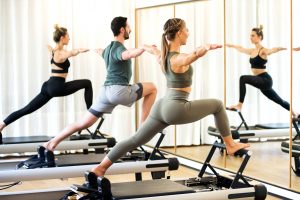Summary: Pilates is an exercise method designed to elongate and strengthen the body by emphasizing balance, alignment, proper breathing, and core stability. Osteopaths, physiotherapists, and general practitioners recommend its simple, low-impact approach as one of the safest forms of exercise, ideal for injury prevention, rehabilitation, and overall physical health. Pilates can be beneficial for just about everyone, regardless of age and fitness level.
The Anatomy of Pilates takes the reader inside the body to show exactly what happens in the body's muscles and joints during a Pilates exercise. At the heart of the book are 150 full-color illustrations showing the muscles that lengthen and strengthen in 40 classic exercises, together with information on anatomy, technique, breathing pitfalls, and more. The Anatomy of Pilates is an accessible, authoritative guide for current and prospective teacher of Pilates, practitioners at all skill levels, physical therapists, and health professionals. (Summary from back of the book, book free for review from Lotus Publishing and image from http://www.pilates-pro.com/)
My Review: Reading this book made me want to utilize Pilates more in my exercise routine. I'm not the most versed in Pilates, but I have enjoyed a class or two. I think this book is geared more towards people who know anatomy, or have more experience with Pilates. Not that I didn't find it helpful, because I did. I have never taken an anatomy class. Therefore, the read wasn't as fast as it would have been had I been more knowledgeable in the proper names of each muscle.
The book is organized in a way that the reader can easily navigate the basics of Pilates--Introduction, Posture and Movement, Applications, and Classical Pilates Exercises. There were a couple of aspects I found very helpful (besides all the full-color pictures). The pitfalls that accompany each exercise/pose were informative for someone who is a beginner. The second section of the book, Posture and Movement, had diagrams and examples of poor posture. After determining your posture--unless you're perfect and don't have any problems with incorrect posture--there is a suggested exercise section. These suggested exercises will help improve the weakened areas of your body based on your posture. The last aspect to the book I found useful is the chart on page 60. It illustrates the exercises to do at what ability level and how many repetitions.
Overall the The Anatomy of Pilates is very informative and because the book is only around 150 pages, it isn't a daunting read. The full-color illustrations are the icing on the cake, making the book more easily digested. (Does icing to do that? Oh well, If not, you get the idea.)
My Rating: 4 Stars
Sum it up: A comprehensive look at Pilates and how it works the body.

No comments:
Post a Comment